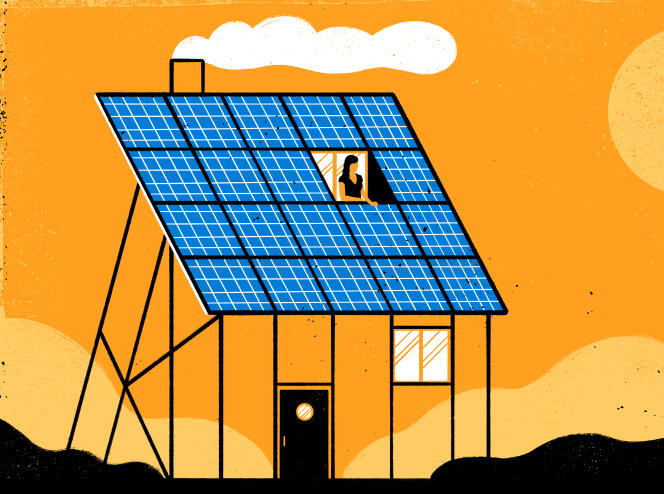
Panels, generally installed on the roof that generate electricity, this is the principle of photovoltaic solar panels that attract more and more individuals. The produced electricity can then be used for housing needs, or sold to EDF. The third option, the most classic at home: consume part of it and sell the surplus.
“The success of photovoltaic installations is undeniable, we can even talk about a tsunami of demands and the industry sometimes has difficulty coping”, estimates Mathias Laffont, Director of Economy, Mobility and Construction at the French Electricity Union. At the end of September 2022, Enedis, which manages the electricity network, identified almost 600,000 photovoltaic installations of all capacities combined, compared to 500,000 in June 2021. Almost 200,000 customers connected to the public grid consumed all or part of their production. A number that is rising very sharply: there were just over 100,000 at the end of March 2021… and 3,000 in 2015.
If Enedis does not distinguish individual installations from professional installations, the company states that self-consumers are essentially customers equipped with installations of less than 36 kilovolt-amperes (kVA), reserved for individuals and small professionals.
The technology is of interest to the general public, but it is a fairly complex field, and it is better for individuals who want to get started to master the main principles beforehand.
Various sale prices
The first element to know: the sale of the current produced by the panels is highly regulated. EDF Purchase Obligation (EDF OA) is an organization that purchases electricity at a rate set at regular intervals by the Energy Regulatory Commission. The price varies depending on the strength of the assembly, the mounting of the panels on the roof and the method of sale.
When part of the electricity is consumed on site, the price differs from the total resale price. For self-consumption with the sale of surpluses, the purchase price of produced electricity is currently set at 13.39 euro cents per kilowatt hour (kWh). Added to this is an investment bonus for self-consumption of 510 euros per peak kilowatt (kWp). For the total resale it is 23.95 euro cents. These prices apply to installations up to 3 kWp.
“Profitability varies depending on the installation, but on average it takes ten to fifteen years to get there, and we can count on a 30 to 50% reduction in the electricity bill compared to a house without panels », points out Emilien Lassara, project manager of photovoltaics at the association Hespul, which supports individuals. Savings that are only achieved if the residents of the house adjust their electricity consumption.
You have 50% of this article left to read. The rest is reserved for subscribers.

